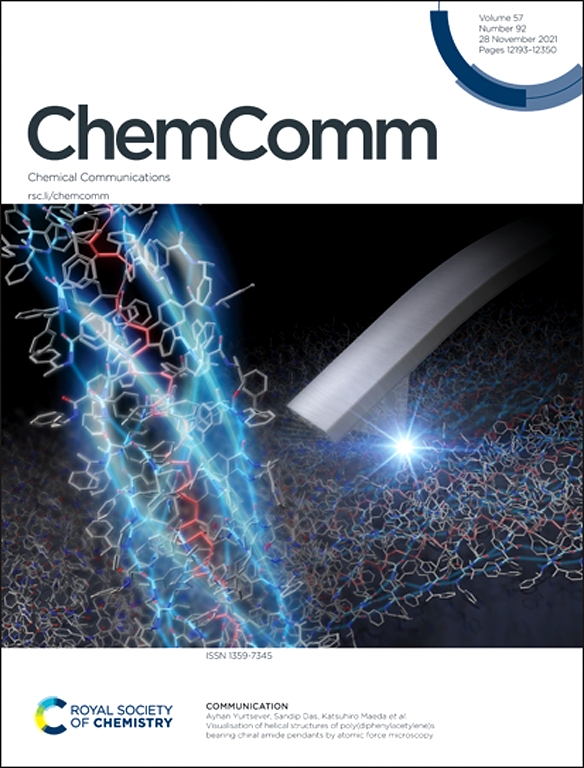功能性柔性吸附剂及其潜在应用
IF 4.2
2区 化学
Q2 CHEMISTRY, MULTIDISCIPLINARY
引用次数: 0
摘要
物理吸附剂已准备好应对全球挑战,如二氧化碳捕获、缓解水资源短缺和节能商品气体储存和分离。刚性吸附剂,即那些在气体或蒸气暴露时保持其结构的吸附剂,在这方面得到了很好的研究。相反,合作灵活的吸附剂在客体暴露的刺激下经历了长期的结构转变。偶然发现的柔性吸附剂通常被视为科学珍品,这导致了对其潜在用途的误解。最近,对柔性吸附剂性能的科学兴趣和见解的增加,提供了一些材料,其性能表明柔性吸附剂可以与刚性吸附剂竞争,用于存储和分离应用。在储气方面,在合适的压力范围内,在低孔隙度和高孔隙度相之间发生客体诱导相变的吸附剂可以提供更好的工作能力和热管理,这一点在吸附天然气储气方面的研究中得到了证明。对于气体和蒸汽分离,柔性吸附剂的本质意味着它们可以经历客体结合的诱导配合机制,即吸附剂可以适应特定的吸附质。这种柔性吸附剂在选择性和分离性能方面为某些碳氢化合物的分离设定了几个新的基准。这篇专题文章回顾了我们和其他人在柔性吸附剂的晶体工程(设计和控制)方面取得的进展,并解决了自其最初发现以来出现的几个神话,特别是关于与天然气储存,集水和碳氢化合物气体/蒸汽分离相关的性能参数。本文章由计算机程序翻译,如有差异,请以英文原文为准。


Functional flexible adsorbents and their potential utility
Physisorbents are poised to address global challenges such as CO2 capture, mitigation of water scarcity and energy-efficient commodity gas storage and separation. Rigid physisorbents, i.e. those adsorbents that retain their structures upon gas or vapour exposure, are well studied in this context. Conversely, cooperatively flexible physisorbents undergo long-range structural transformations stimulated by guest exposure. Discovered serendipitously, flexible adsorbents have generally been regarded as scientific curiosities, which has contributed to misconceptions about their potential utility. Recently, increased scientific interest and insight into the properties of flexible adsorbents has afforded materials whose performance suggests that flexible adsorbents can compete with rigid adsorbents for both storage and separation applications. With respect to gas storage, adsorbents that undergo guest-induced phase transformations between low and high porosity phases in the right pressure range can offer improved working capacity and heat management, as exemplified by studies on adsorbed natural gas storage. For gas and vapour separations, the very nature of flexible adsorbents means that they can undergo induced fit mechanisms of guest binding, i.e. the adsorbent can adapt to a specific adsorbate. Such flexible adsorbents have set several new benchmarks for certain hydrocarbon separations in terms of selectivity and separation performance. This Feature Article reviews progress made by us and others towards the crystal engineering (design and control) of flexible adsorbents and addresses several of the myths that have emerged since their initial discovery, particularly with respect to those performance parameters of relevance to natural gas storage, water harvesting and hydrocarbon gas/vapour separation.
求助全文
通过发布文献求助,成功后即可免费获取论文全文。
去求助
来源期刊

Chemical Communications
化学-化学综合
CiteScore
8.60
自引率
4.10%
发文量
2705
审稿时长
1.4 months
期刊介绍:
ChemComm (Chemical Communications) is renowned as the fastest publisher of articles providing information on new avenues of research, drawn from all the world''s major areas of chemical research.
 求助内容:
求助内容: 应助结果提醒方式:
应助结果提醒方式:


